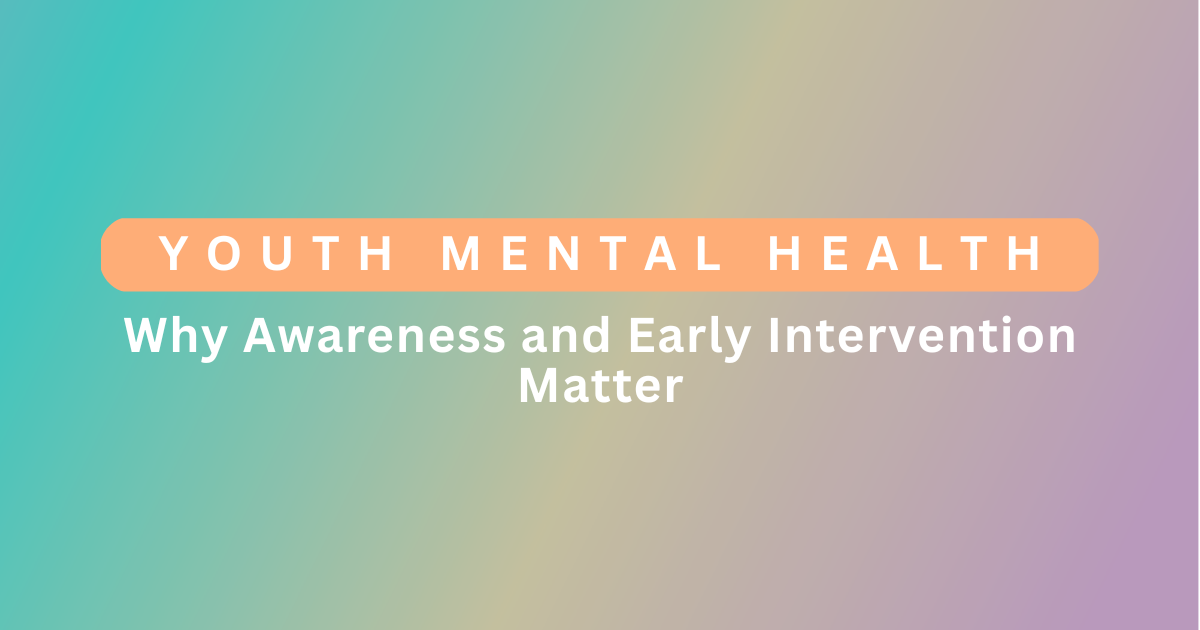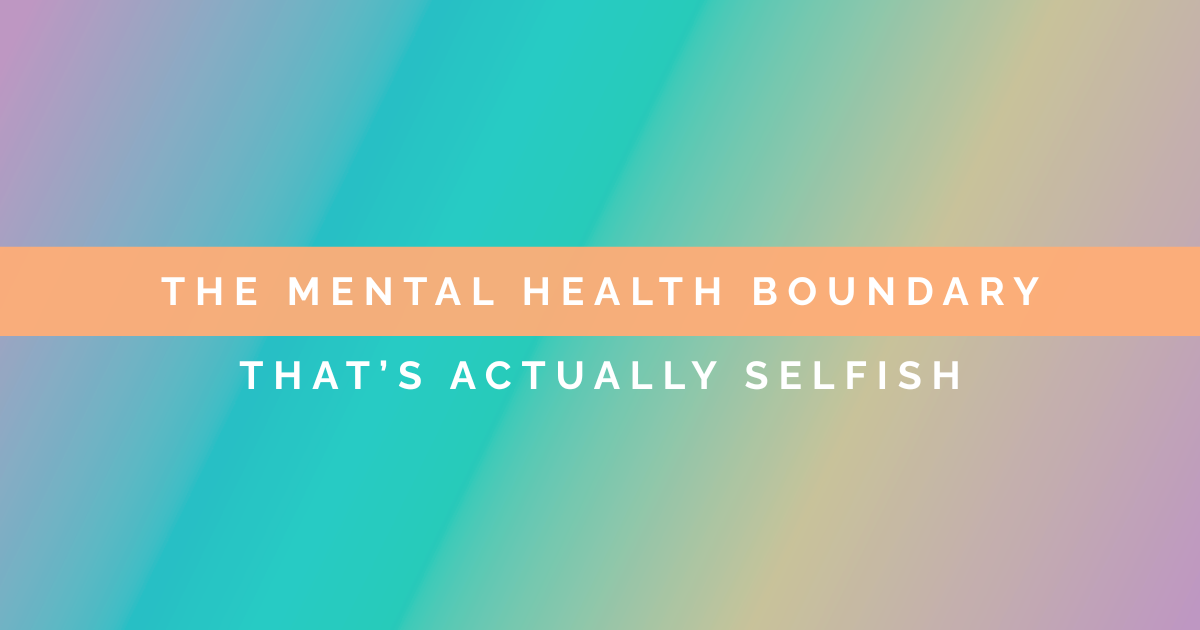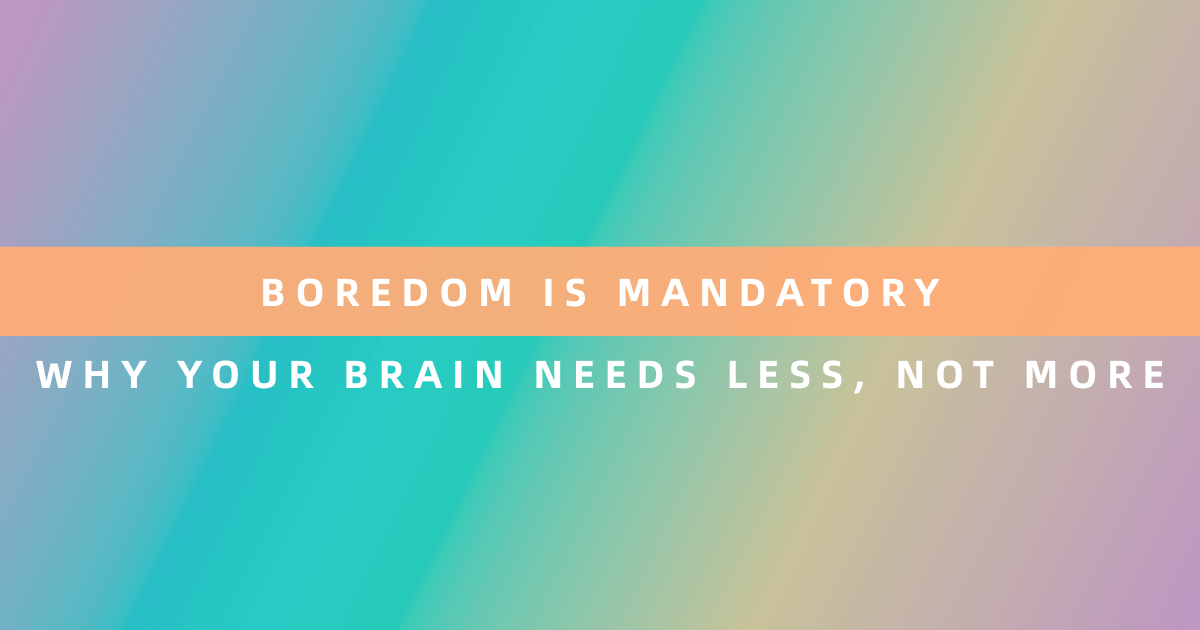Today, young people face numerous pressures that can affect their mental well-being. Parents, educators, and communities are increasingly recognizing the importance of supporting mental health during these formative years.
The discussion around youth mental health has grown. We now better understand that emotional and psychological challenges often start in childhood and adolescence. Supporting young people through these challenges doesn’t just help in the moment; it also builds a foundation for lifelong mental wellness and resilience.
Why is it so important to be aware and offer support early for youth mental health, and how can we better support the young people in our lives during these key years?
Understanding Young People’s Mental Health
When we talk about young people’s mental health, we mean that kids and teens are doing well emotionally, mentally, and socially. This period represents not just a time of vulnerability but also a significant opportunity to step in and help them learn ways to cope that will last their entire lives.
There are a few things that make these growing-up years important for their mental health:
Rapid Brain Development
During adolescence, the brain undergoes significant growth, particularly in areas crucial for impulse control, emotional regulation, and decision-making [1]. These brain changes mean that young people can be more sensitive to things that cause stress. However, it also means their brains have a lot of plasticity, which is like being moldable, making them really able to benefit from positive support and interventions.
This developmental stage presents a key opportunity to establish neural pathways that support healthy emotional processing and stress management. Skills developed during this time often become ingrained patterns that contribute to lifelong mental well-being and resilience.
Identity Formation
Adolescence represents a critical period for identity development as young people explore values, beliefs, relationships, and their place in the world. Mental health challenges during this time can significantly impact this exploration process, influencing how young people view themselves and their possibilities.
Supportive environments allow healthy identity exploration while helping appropriate guidance young people develop authentic, confident self-concepts. Conversely, unsupported mental health difficulties may lead to identity formation built around limitation, shame, or disconnection.
Establishing Patterns
Patterns established during youth, including coping mechanisms, help-seeking behaviors, and emotional expression, often persist into adulthood. Early intervention provides an opportunity to foster healthy patterns before less adaptive approaches become ingrained.
Young people who learn to recognize emotions, communicate needs effectively, and utilize healthy coping strategies develop valuable skills that serve them throughout life. These capabilities build resilience for facing future challenges with greater confidence and effectiveness.
Academic and Social Development
Mental health significantly impacts young people’s ability to engage in essential developmental tasks, including learning, forming relationships, and participating in the community. Unaddressed mental health challenges often disrupt these crucial processes, creating cascading effects on educational outcomes, social connections, and future opportunities.
Supporting youth mental health helps ensure young people can fully participate in educational experiences, develop meaningful connections with peers, and engage in activities that build skills and confidence.
The Critical Importance of Early Awareness and Intervention
Early awareness and intervention for youth mental health challenges yield benefits extending far beyond immediate symptom relief. This approach fundamentally alters developmental trajectories, creating positive ripple effects throughout young people’s lives.
Preventing Escalation and Chronicity
When recognized early, many mental health challenges respond well to appropriate intervention, preventing progression to more serious conditions. Early intervention often means that less intensive treatment can produce significant positive outcomes, reducing distress and disruption for young people and families.
Without appropriate support, initial difficulties frequently intensify and become more complex over time. What begins as mild anxiety might develop into paralyzing fear, or temporary sadness may evolve into persistent depression affecting multiple life domains. Early intervention interrupts this progression, addressing challenges before they become entrenched patterns.
Reducing Lifetime Impact
Mental health challenges emerging in youth often continue into adulthood without appropriate intervention. Early support significantly reduces the likelihood of lifelong struggles, decreasing both personal suffering and societal impact.
Supporting youth mental health represents an investment in future wellbeing, with benefits including:
- – Improved educational and vocational outcomes
- – Healthier relationship patterns
- – Enhanced physical health
- – Reduced substance use risk
- – Greater life satisfaction and purpose
- – More effective stress management capabilities
These outcomes benefit not just individuals but entire communities through increased participation, productivity, and connection.
Building Developmental Assets
Effective intervention does more than address specific symptoms, it builds developmental assets and protective factors supporting ongoing mental wellbeing. Young people learn skills transferable across situations and challenges, creating foundations for lifelong resilience.
These assets include:
- – Emotional awareness and regulation skills
- – Effective communication capabilities
- – Problem-solving approaches
- – Help-seeking behaviors
- – Stress management techniques
- – Self-compassion practices
- – Social connection abilities
Each of these capabilities supports not just current well-being but equips young people for tackling future life transitions and challenges with greater confidence and effectiveness.
Normalizing Mental Health Care
Early intervention helps normalize conversations about mental health, reducing stigma that often prevents help-seeking. Young people experiencing supportive, matter-of-fact responses to mental health challenges learn that seeking help represents strength rather than weakness or failure.
This normalization creates lasting attitudes about mental health care, increasing the likelihood that young people will continue seeking appropriate support throughout life when needed. The message that mental health represents an important part of overall wellbeing, worthy of attention and care, provides a valuable lifelong perspective.
Recognizing Warning Signs in Young People
Supporting youth mental health begins with recognizing potential indicators of emotional or psychological distress. While some fluctuation in mood and behavior represents normal development, certain patterns warrant attention and possible intervention.
Emotional Changes
Significant shifts in emotional expression, particularly when persistent and out of proportion to circumstances, often signal developing mental health challenges. These changes might manifest as:
- – Persistent sadness or tearfulness
- – Heightened irritability or anger
- – Excessive worry or fear
- – Emotional numbness or disconnection
- – Rapid mood swings
- – Intense feelings of guilt or worthlessness
- – Expressions of hopelessness about the future
While temporary emotional reactions to specific situations remain normal, ongoing patterns interrupting daily functioning deserve attention and support.
Behavioral Indicators
Changes in behavior often provide observable evidence of underlying mental health difficulties. Watch for:
- – Withdrawal from previously enjoyed activities
- – Declining academic performance
- – Changes in friendship patterns or social isolation
- – Sleep disruptions (either excessive sleeping or insomnia)
- – Appetite and weight changes
- – Increased physical complaints without a clear medical cause
- – Risk-taking behaviors or self-destructive actions
- – Substance use to manage emotions
- – Excessive focus on appearance or weight
These behavioral shifts often represent attempts to cope with difficult emotions or psychological distress, even when young people cannot verbalize their internal experiences.
Communication Patterns
How young people talk about themselves and their experiences offers important insights into their mental wellbeing. Concerning communication includes:
- – Expressions of hopelessness (“Nothing will ever get better”)
- – Negative self-talk (“I’m worthless” or “Nobody likes me”)
- – Frequent apologizing for normal needs or feelings
- – Talk of feeling like a burden to others
- – Preoccupation with death or dying
- – Statements about wanting to disappear or escape
- – Difficulty expressing emotions verbally
- – Extreme black and white thinking
These communication patterns often reveal thought processes contributing to emotional distress and deserving of supportive intervention.
Physical Manifestations
Mental health challenges frequently express themselves through physical symptoms, particularly in younger children who may lack the emotional vocabulary to express psychological distress. Watch for:
- – Frequent headaches or stomachaches without a medical explanation
- – Changes in energy level
- – Deterioration in personal hygiene
- – Tension, restlessness, or inability to relax
- – Sleep disturbances affecting daytime functioning
- – Significant weight changes
- – Physical complaints that vary with stress levels
These physical manifestations highlight the important connection between mental and physical well-being, reminding us that emotional support often benefits overall health.
School and Learning Impacts
Since young people spend significant time in educational environments, changes in school functioning often signal developing mental health challenges:
- – Declining grades or academic performance
- – Difficulty concentrating or maintaining attention
- – Excessive perfectionism and anxiety about mistakes
- – Avoidance of specific classes or the school altogether
- – Resistance to attending school
- – Changes in participation during class
- – Memory problems affecting learning
- – Excessive fatigue interfering with schoolwork
Educational settings provide valuable opportunities for observation and support, with teachers and school counselors often noticing early indicators of mental health concerns.
Creating Supportive Environments for Youth Mental Health
Environments supporting youth mental wellbeing share important characteristics that protect against mental health challenges while promoting resilience and healthy development. These supportive contexts extend beyond crisis response to foster ongoing psychological wellness.
Open Communication
Environments with open, nonjudgmental communication about emotions and mental health create safety for young people to express concerns before they become crises. This openness involves:
- – Age-appropriate discussions about emotions and mental health
- – Validation of feelings without minimizing or dismissing
- – Active listening without immediate problem solving
- – Comfortable silence allows young people to process thoughts
- – Appropriate vulnerability from adults about their own emotions
- – Regular check-ins about feelings and experiences
- – Normalization of discussing difficult emotions
This communication climate helps young people develop emotional vocabulary while learning that all feelings deserve recognition and respect.
Connection and Belonging
Strong relationships and a sense of belonging serve as powerful protective factors for youth mental health. Supportive environments foster:
- – Consistent, reliable relationships with caring adults
- – Opportunities for positive peer connections
- – Inclusion in community activities and traditions
- – Recognition of individual contributions and strengths
- – Cultural connection and identity affirmation
- – Structured activities promoting teamwork and cooperation
- – Spaces where young people feel genuinely known and valued
These connection experiences buffer against mental health challenges while providing essential support during difficult periods.
Appropriate Expectations and Support
Supportive environments balance appropriate expectations with necessary support, helping young people develop confidence through graduated challenges. This balance includes:
- – Age-appropriate responsibilities promoting capability
- – Recognition of individual differences in development and ability
- – Scaffolded support tailored to specific needs
- – Celebration of effort and progress, not just achievement
- – Opportunities for guided independence
- – Flexibility during particularly challenging periods
- – Clear, consistent boundaries provide security
This approach helps young people develop self-efficacy while ensuring necessary support remains available during struggles.
Skill Development Opportunities
Environments supporting youth mental health intentionally foster skills enhancing psychological wellbeing. These include:
- – Emotional awareness and regulation techniques
- – Healthy stress management approaches
- – Problem-solving and decision-making processes
- – Conflict resolution methods
- – Self-compassion practices
- – Mindfulness and present moment awareness
- – Critical media consumption skills
These capabilities serve as protective factors against mental health challenges while providing practical tools for handling difficult emotions and situations.
Physical Wellbeing Support
Recognition of the mind-body connection leads to supportive environments to promote physical habits, enhancing mental health.
- – Regular physical movement opportunities
- – Adequate sleep routines
- – Nutritional support for brain health
- – Access to nature and outdoor spaces
- – Balance between activity and rest
- – Limited screen time, particularly before sleep
- – Opportunities for sensory regulation and processing
These physical foundations significantly impact emotional and psychological functioning, creating biological conditions supporting mental wellbeing.
Early Intervention Approaches That Make a Difference
When warning signs emerge, early intervention approaches can significantly alter trajectory and outcomes. These approaches range from informal support to professional treatment, with different levels of intensity appropriate for various situations.
Compassionate Conversation
Often, initial intervention involves simply opening a compassionate conversation about observed changes or concerns. Effective approaches include:
- – Choosing private, comfortable settings without time pressure
- – Starting with observations rather than interpretations
- – Using “I” statements expressing care rather than criticism
- – Listening more than speaking
- – Avoiding minimizing or dismissing expressed feelings
- – Asking open-ended questions about experiences
- – Expressing support without pressure for immediate solutions
These conversations communicate care while providing young people opportunity to share perspectives about their experiences and needs.
Skill Building Support
For many young people, learning specific skills helps address emerging challenges before they escalate. Valuable skill development includes:
- – Emotional identification and expression methods
- – Structured problem-solving approaches
- – Relaxation and grounding techniques
- – Realistic thought evaluation skills
- – Boundary setting practices
- – Healthy communication methods
- – Distress tolerance capabilities
These skills provide practical tools for managing difficult emotions and situations, building confidence while reducing reliance on less helpful coping mechanisms.
Environmental Modifications
Sometimes, adjustments to the environment effectively address emerging mental health challenges. Helpful modifications might include:
- – Reducing unnecessary stressors and commitments
- – Creating more predictable routines
- – Ensuring adequate time for rest and recovery
- – Providing appropriate academic accommodations
- – Increasing positive social opportunities
- – Limiting exposure to triggering situations temporarily
- – Enhancing access to calming activities and spaces
These adjustments reduce environmental demands during vulnerable periods while creating conditions supporting natural recovery and growth.
Professional Assessment
When concerns persist despite informal interventions, professional assessment provides a valuable perspective and guidance. This might involve:
- – Consultation with school counselors or psychologists
- – Evaluation by primary care providers
- – Assessment by mental health specialists
- – Psychological testing, when appropriate
- – Collaborative meetings between providers and families
- – Development of comprehensive support plans
- – Recommendations for specific therapeutic approaches
Professional assessment helps clarify needs while identifying the most effective intervention approaches for specific situations.
Therapeutic Support
Various therapeutic approaches effectively address youth mental health challenges, particularly when initiated early. Evidence-supported options include:
- – Cognitive behavioral therapy
- – Dialectical behavior therapy skills
- – Family therapy approaches
- – Play therapy for younger children
- – Expressive arts interventions
- – Group therapy with peers
- – Mindfulness-based approaches
Connecting with appropriate therapy provides structured support for resolving challenges while developing lasting psychological skills.
Medication Consideration
For some young people, medication represents an important component of comprehensive intervention, particularly for conditions with significant biological components. This approach involves:
- – Thorough evaluation by qualified medical providers
- – Discussion of potential benefits and side effects
- – Regular monitoring of response and adjustment as needed
- – Integration with other supportive approaches
- – Developmentally appropriate involvement of young people in decisions
- – Recognition of medication as one tool among many
- – Clear communication between prescribers, families, and other providers
When appropriately prescribed and monitored, medication sometimes provides biological support, allowing other interventions to work more effectively.
Digital Support Tools
Increasingly, digital platforms offer accessible, engaging support for youth mental health. Effective tools provide:
- – Evidence-based skill development in appealing formats
- – Regular monitoring of mental health indicators
- – Connection with professional support when needed
- – Age-appropriate content and presentation
- – Privacy protection and data security
- – Integration with other intervention approaches
- – Accessibility across various settings and schedules
These digital resources extend support beyond traditional settings, offering 24/7 access to tools and information promoting mental wellbeing.
Building Community Support Systems for Youth Mental Health
Supporting youth mental health extends beyond individual interventions to creating comprehensive community systems promoting wellbeing while providing a coordinated response when challenges emerge.
School-Based Approaches
Educational settings offer unique opportunities for supporting youth mental health through:
- – Universal mental health education in the regular curriculum
- – School counseling services for early intervention
- – Teacher training in recognizing warning signs
- – Peer support programs promoting connection
- – Structured social-emotional learning activities
- – Restorative practices addressing conflict constructively
- – Partnership with community mental health resources
These approaches reach young people where they spend significant time, normalizing mental health conversations while providing accessible support.
Parent and Caregiver Support
Families need their support to effectively nurture youth mental health:
- – Parent education about normal development and warning signs
- – Support groups connecting families with similar experiences
- – Resources explaining mental health concepts in accessible language
- – Respite opportunities during intensive support periods
- – Guidance for accessing healthcare and educational systems
- – Tools for managing parental stress during challenging times
- – Recognition of families as essential partners in intervention
Supporting adults who care for young people ultimately enhances the capacity for nurturing youth mental wellbeing effectively.
Primary Care Integration
Integrating mental health awareness into primary healthcare creates additional opportunities for early recognition and intervention:
- – Regular mental health screening during routine visits
- – Brief intervention by trusted medical providers
- – Direct connection with specialized services when needed
- – Monitoring physical health factors affecting mental well-being
- – Coordination between medical and mental health providers
- – Accessible entry point already utilized by most families
- – Normalization of mental health as part of overall healthcare
This integration reduces barriers to support while ensuring comprehensive attention to interconnected aspects of health.
Community Resource Collaboration
Coordinated community approaches enhance effectiveness through:
- – Clear referral pathways between services
- – Shared information (with appropriate consent)
- – Reduced duplication of efforts
- – Comprehensive support addressing multiple needs
- – Streamlined access, reducing family burden
- – Collective impact approaches to systemic issues
- – Community education reduces stigma
These collaborative systems help families move through complex support networks while ensuring young people receive comprehensive, coordinated care.
Youth Voice and Leadership
Effective community systems actively involve young people themselves through:
- – Youth advisory councils inform program development
- – Peer support initiatives led by young people
- – Opportunities for sharing lived experience
- – Authentic decision-making roles in organizations
- – Mentoring programs connecting youth with different experiences
- – Recognition of young people as experts on their generation
- – Platforms amplifying youth perspectives on mental health needs
This involvement ensures interventions remain relevant and engaging while empowering young people as agents in their wellbeing.
Taking Action: Supporting the Young People in Your Life
Whether you’re a parent, educator, healthcare provider, or community member, specific actions can significantly impact youth mental health outcomes. Consider these practical steps for supporting the young people in your life.
Start the Conversation
Perhaps the most important first step involves simply opening a conversation about mental health and emotions:
- – Normalize the discussion of feelings as part of regular interaction
- – Share age-appropriate information about mental health
- – Use media examples to discuss emotional experiences
- – Provide language for describing different emotional states
- – Respond non judgmentally to expressions of difficult feelings
- – Create regular check-in opportunities without pressure
- – Model appropriate vulnerability about your own emotions
These conversations build the foundation for young people to share concerns when they arise while developing emotional vocabulary and awareness.
Educate Yourself
Enhancing your understanding of youth mental health increases confidence and effectiveness:
- – Learn about typical emotional development at different ages
- – Understand common mental health challenges affecting young people
- – Familiarize yourself with available resources in your community
- – Distinguish between typical developmental struggles and warning signs
- – Explore evidence-based approaches to supporting youth wellbeing
- – Recognize how cultural factors influence mental health expression
- – Stay current with the evolving understanding of youth mental health
This knowledge helps you respond appropriately to concerns while avoiding either overreaction or dangerous minimization.
Build Your Relationship
Strong, trusting relationships create a foundation for effective mental health support:
- – Spend regular time together without an agenda
- – Demonstrate interest in young people’s perspectives and experiences
- – Maintain appropriate boundaries, providing security
- – Show up consistently during both challenging and positive times
- – Listen without immediately trying to fix problems
- – Respect growing independence while offering steady support
- – Apologize and repair when mistakes occur
These relationships often determine whether young people share concerns and accept support when struggling.
Know Your Resources
Familiarizing yourself with available support options prepares you to respond effectively when needs arise:
- – Identify crisis services available 24/7
- – Connect with school counseling resources
- – Research mental health providers specializing in youth
- – Explore both in-person and digital support options
- – Understand insurance coverage and financial assistance
- – Identify support specifically for parents and families
- – Connect with others supporting youth mental health
This preparation ensures you can access appropriate resources quickly when young people need support beyond what you can provide personally.
Advocate When Necessary
Sometimes supporting youth mental health requires advocacy within systems:
- – Request appropriate educational accommodations
- – Accessing insurance and healthcare systems
- – Challenge stigmatizing attitudes or practices
- – Connect young people with specialized resources
- – Ensure cultural responsiveness in provided services
- – Maintain appropriate confidentiality while ensuring safety
- – Promote policy changes supporting youth mental health
This advocacy helps young people receive necessary support while demonstrating your commitment to their well-being.
The Ongoing Journey of Youth Mental Health Support
Supporting youth mental health represents an ongoing journey rather than a destination. This perspective acknowledges both challenges and opportunities while maintaining hope and commitment through inevitable ups and downs.
Understanding Youth Mental Health Development
To help youth, it’s important to remember they’re always growing and changing throughout their childhood and teen years. This means:
- – What works at one age might need to change as they get older.
- – New difficulties can pop up as they go through different stages.
- – They also gain new skills and strengths, which opens up new ways to help.
- – How much support they need might go up and down, not just steadily get better.
- – Each time they move into a new phase, there can be both challenges and chances for them to grow.
- – Little by little, young people will start taking more control of their well-being.
- – The adults in their lives will shift from telling them what to do to offering advice and support.
This developmental perspective maintains realistic expectations while recognizing the dynamic nature of youth mental health.
Balancing Protection and Growth
Supporting youth mental health involves a careful balance between protection and growth opportunities:
- – Shielding from overwhelming challenges while allowing manageable stress
- – Providing support without creating dependency
- – Encouraging independence while maintaining safety nets
- – Respecting privacy while ensuring appropriate oversight
- – Allowing natural consequences while preventing harmful outcomes
- – Advocating when necessary without speaking over young people’s voices
- – Creating space for identity exploration within appropriate boundaries
This balance helps young people develop resilience and capability while ensuring necessary support remains available during difficulties.
Committing to the Long View
Meaningful youth mental health support requires patience and perspective:
- – Progress often includes both forward movement and temporary setbacks
- – Small positive changes sometimes precede more visible improvements
- – Some periods require more intensive support than others
- – Different challenges may emerge as development progresses
- – Early intervention impacts trajectory even when immediate change seems limited
- – Each positive interaction builds the foundation for future well-being
- – Consistent support over time proves more important than perfect intervention
This long view helps maintain hope and commitment through inevitable challenges in the support journey.
Building Collective Responsibility
Supporting youth mental health ultimately requires shared commitment across communities:
- – Families provide an essential foundation, but cannot meet all needs alone
- – Educational systems play a crucial role in both prevention and intervention
- – Healthcare providers offer specialized expertise and resources
- – Community organizations create belonging and development opportunities
- – Policy makers shape systems impacting youth wellbeing
- – Religious and cultural institutions offer meaning and connection
- – Young people themselves contribute essential perspective and leadership
This collective approach recognizes that youth mental health flourishes within communities where well-being becomes a shared priority and responsibility.
Want to see how tech can help young people with their feelings? Learn how Theryo, an AI platform that works together with you, gives tools to see how you’re feeling over time, learn ways to cope, and connect with a professional if you need to.
Frequently Asked Questions About Supporting Youth Mental Health
1. How do I know if a young person needs professional mental health support?
Consider seeking professional support when emotional or behavioral changes persist for several weeks, interfere with daily functioning (school, relationships, self-care), involve safety concerns, cause significant distress, or don’t respond to usual coping strategies and support. Trust your instincts. If you’re consistently worried about a young person’s well-being, professional consultation provides valuable perspective, even if just for reassurance. Remember that early intervention often prevents escalation and typically requires less intensive treatment than waiting until a crisis develops.
2. How can I talk to a young person about mental health concerns without making them defensive?
Approach conversations with genuine curiosity rather than assumption or judgment. Choose private, relaxed moments without time pressure, and start with specific observations rather than interpretations (“I’ve noticed you seem tired lately” rather than “You seem depressed”). Use “I” statements expressing care (“I care about you and want to understand what you’re experiencing”), listen more than you speak, validate feelings without minimizing them, and avoid immediate problem solving before fully understanding their perspective. Respect that opening the conversation represents a first step, building trust for ongoing dialogue often matters more than getting all information immediately.
3. What if a young person refuses help despite showing warning signs?
Continue maintaining supportive relationships while respecting autonomy when safety isn’t immediately threatened. Explore specific concerns about getting help, provide information addressing misconceptions, consider different support options that might feel more acceptable, involve trusted people the young person respects, and focus on specific challenges rather than diagnostic labels. In safety emergencies (suicidal thoughts, self-harm, severe functional impairment), more directive intervention becomes necessary, potentially including emergency services. Otherwise, patience, consistent support, and continued conversation often eventually lead to acceptance of help.
4. How can families support youth mental health with limited financial resources?
Many accessible options exist, including school counseling services, community mental health centers with sliding scale fees, university training clinics, telehealth options, primary care providers who address mental health, faith communities with counseling ministries, and support groups. Additionally, numerous free resources support family mental health literacy, including educational websites, public library materials, online support communities, and parent education through schools. Focus on creating a supportive home environment promoting sleep, physical activity, nutrition, positive connection, and stress management, these foundations significantly impact mental wellbeing regardless of financial resources.
5. How can technology positively support youth mental health?
Digital tools offer several advantages, including accessibility outside traditional service hours, appealing formats engaging for young people, reduced stigma compared to in-person services, scalability reaching underserved populations, personalization based on individual needs, and connection with supportive communities beyond geographical limitations. Effective digital supports include skill-building apps teaching coping strategies, mood tracking tools identifying patterns, guided mindfulness and relaxation resources, moderated peer support communities, and platforms connecting with professional help when needed. When selecting digital resources, prioritize evidence-based content, strong privacy protections, and complementary use alongside human connection rather than replacement.







